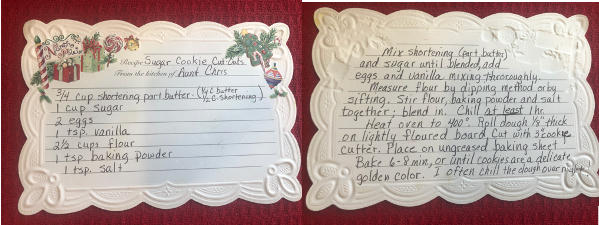Who wants to live in a world without cookies?

Cookie Monster can breathe a sigh of relief, as our favorite Buttermilk Bakery cookies aren’t going anywhere anytime soon, but the pieces of data stored on your computer are about to be cooked. As marketers we face the impending extinction of cookies in the Google ecosystem in the second half of 2024 (at least until they push the date back again), on the heels of Apple already taking steps to protect user’s privacy in their iOS 14 update in 2020. The secret to success in this new world lies in your top-secret family cookie recipe.
Before we unveil secrets that have been passed down from generation to generation, let’s look at the different types of data parties us marketers are invited to on a daily basis: 1st, 2nd, and 3rd party data. To make it easier to understand, let’s compare the types of data to cookies that you might find at an actual party.
- 1st party data: 1st party data is the homemade cookie from your family recipe. It is the most important type of data because it is collected straight from your own audience. The information is the most effective and reliable because you are getting it directly from the source.
- 2nd party data: 2nd party data is the cookie that your friend baked and brought over to your party. It is a partner or friend’s 1st party information that they are giving to you. By knowing the partner, you most likely know the accuracy and quality of the data.
- 3rd party data: 3rd party data is the store-bought cookie with ingredients you may not know, but it is widely available and in large quantities. It can be hard to know exactly where your 3rd party data came from. The reason for this is because large data collectors collect their data from other companies and then put it into a single dataset. 3rd party data is helpful in reaching broad audiences.
So, what steps can you take as a marketer to evolve with, and even before the market? Here are a few tips from our marketing kitchen to yours:
- Focus on building your 1st party database. Offers on your website, or low CPM paid media lead generation campaigns to capture email addresses of prospects you can convert via email is one strategy that has worked well for many of our clients. This should be a line item you add to your budget and leave on moving forward.
- Pick your battles and own your channels with 2nd party data. Identify key media publishers with a high index of your target audience and leverage 2nd party data to reach your customers. With this approach, its important that you plan your budget to enable for consistent presence, custom integrations to stand out and leveraging the value of brand equity your partner has to the fullest extent.
- Take a hybrid approach and use your website traffic to expand your 1st party audience via large, vetted 2nd party databases. Using tools like Resonate or MRI Simmons you can learn more about your web visitors through mapping your data against large research panel information, and even build your own exportable audiences which can be more laser targeted than the walled garden paid media properties of Google and Meta.
- Lastly, we would be remiss to not share the world’s best Sugar Cookie recipe – when things get confusing with parties and data, these are a hit every time:


